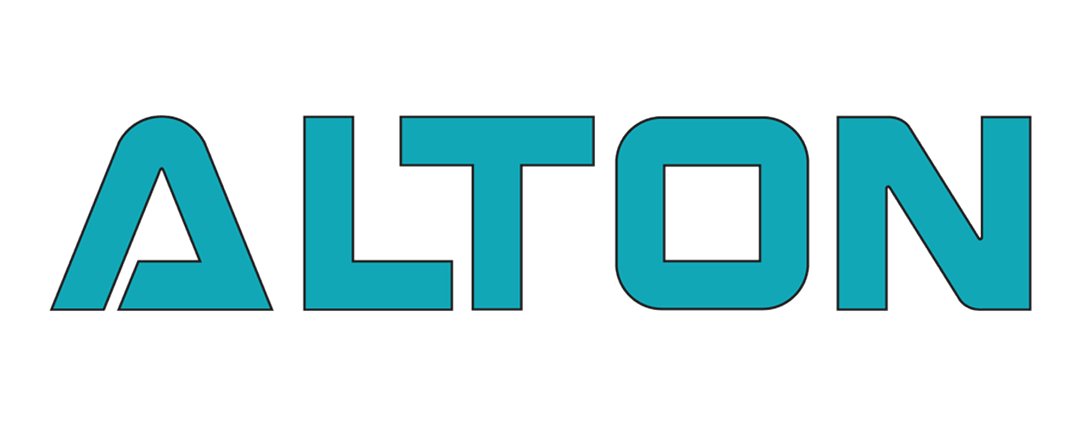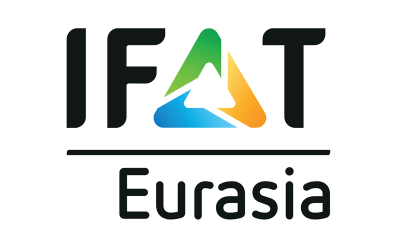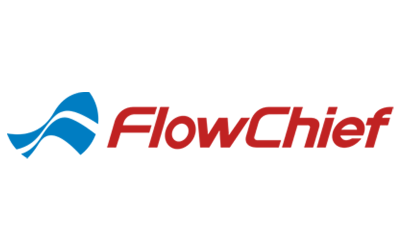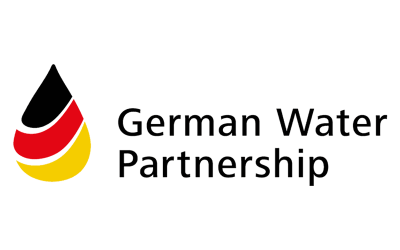Introduction to Automatic Pressure Reducing Valves (PRV)
Short Definition:
An automatic pressure reducing valve (PRV) is a device that maintains the downstream pressure (outlet) at a constant preset value, regardless of fluctuations in upstream pressure (inlet) or variations in flow demand. The regulation is performed hydraulically and mechanically in a fully automatic manner, without the need for electrical power supply or electronic controllers.
Common Types:
- Pilot-Operated: The most common type in urban water distribution networks; consists of a main valve body and one or more pilot valves to sense and regulate pressure.
- Direct-Acting: Suitable for small sizes and limited applications; provides fast response but lower accuracy and stability compared to pilot-operated types.
Main Components of Pilot-Operated Type:
- Main valve body (typically globe-type with diaphragm)
- Diaphragm chamber and actuator for gradual opening/closing
- Pressure pilot (sensor/regulator for reference pressure)
- Orifices and needle valves for dynamic adjustment and stability
- Sensing line connecting downstream pressure to the pilot
- Isolation valves and fine filters in the control circuit
- Inlet and outlet pressure gauges for monitoring
Operating Principle (Summary):
- The pilot senses downstream pressure.
- By modulating the flow of control water to the diaphragm chamber, the plug position of the valve changes.
- Result: downstream pressure remains stable around the preset value.
Key Parameters for Selection and Operation:
- Pressure regulation range and pressure class (PN)
- Effective pressure differential (ΔP) and operating flow rate – the effective range is typically between 20% and 80% valve opening.
- Dynamic response and stability (sensitivity to oscillation and hunting)
- Cavitation and noise risk at high pressure drops
- Body material and sealing surfaces (compatibility with water quality, corrosion resistance)
- Accessories such as manual bypass, air release valve, and position indicator
Typical Installation Points in Networks:
- Entry points of DMAs (District Metered Areas) and pressure zones
- Inlets to storage reservoirs or secondary pumping stations
- Transfer points between different pressure zones
- Protection of old pipelines, sensitive branches, and measuring equipment
Common Challenges in Conventional (Non-Digital) Operation:
- Setpoint drift due to pilot/spring wear or sedimentation
- High sensitivity to upstream pressure fluctuations leading to instability (hunting)
- Lack of data logging and remote monitoring (dependence on field inspections)
- Non-optimized seasonal/manual adjustments not aligned with consumption patterns
- Unstable behavior at low flows (leakage/chatter) causing premature wear
Key Terms:
- Upstream/Downstream: inlet/outlet side relative to valve location
- Pilot Valve: low-flow control valve that sets reference pressure
- Diaphragm Actuator: diaphragm mechanism providing opening/closing force
- Hunting: oscillatory fluctuation of pressure/position due to poor dynamic tuning
Note: The next sections will cover the “role of PRVs in network architecture,” “reasons and benefits of digitalization,” and finally “Alton Smart Valve Controller.”
[Placeholder for schematic diagram of PRV operation – in final version]
The Role of PRVs and Flow Control in Water Supply and Distribution Networks
Strategic Importance of PRVs:
In the architecture of water supply networks, pressure management is one of the most critical factors for ensuring stability, reducing water losses, and protecting infrastructure. Pressure reducing valves (PRVs) act as control nodes that maintain pressure within defined zones (pressure zones or DMAs). Without these devices, networks would be exposed to excessive pressure, pipe bursts, and increased leakage.
In gravity-fed water supply systems, it is essential to gradually reduce pressure at calculated points along the pipeline. This prevents excessive downstream pressure and helps to avoid water hammer and structural damage.
Role in Pressure Zone Management:
- Dividing the network into pressure zones to achieve hydraulic balance.
- Preventing transmission of excessive pressure from higher elevations to lower areas.
- Creating stable conditions for accurate operation of bulk meters, leak detection, and other measuring equipment.
Connection with Flow Management and Distribution:
In many applications, PRVs are combined with flow control. The simultaneous regulation of pressure and flow ensures that:
- Flow into sensitive areas is limited.
- Reservoirs and tanks are filled gradually and in a controlled manner.
- Water hammer and severe fluctuations are prevented.
Advantages of PRVs in Networks:
- Reduction of leakage and non-revenue water (NRW)
- Longer service life of pipes and fittings
- Improved quality of service for consumers (stable pressure during peak hours)
- Lower maintenance and repair costs
- Foundation for digitalization and smart monitoring
Challenges of Conventional Operation:
- Manual, seasonal adjustments required according to consumption patterns
- Lack of integrated visibility of pressure across the network
- Difficulty in predicting network behavior during incidents (pipe bursts, major leaks)
In the next section, we will address the question: why should PRVs be digitalized, and what benefits does this bring to operators?
Why Should PRVs Be Digitalized?
1. Need for Real-Time Monitoring and Control:
Water supply networks are dynamic, with pressure constantly affected by consumption changes, hydraulic conditions, and unforeseen events (such as pipe bursts). Traditional PRVs only maintain pressure at a fixed point but provide no data about their status or the network. Digitalization enables real-time measurement of pressure and flow, data transmission, and remote control.
2. Reducing Water Loss and Leakage (Non-Revenue Water):
In many pressure zones, consumption patterns vary significantly throughout the day, influenced by temperature, workdays, or holidays. Keeping PRV outlet pressure fixed does not guarantee stable pressure at the ends of the network. Therefore, real-time outlet pressure control and adaptation to consumption demand are crucial to stabilize pressure in critical and remote points of each zone. Smart pressure management through digital controllers ensures pressure is maintained only as needed, directly reducing hidden leaks, sudden pipe bursts, and pumping energy losses.
3. Dynamic Network Optimization:
In conventional systems, pressure is usually set at a constant setpoint. With digital control, adaptive regulation (Dynamic Control) can be implemented, adjusting pressure according to time of day, consumption patterns, or emergency conditions. This flexibility improves efficiency and increases customer satisfaction.
4. Support for Preventive Maintenance:
Digital controllers can log and analyze valve behavior and pressure variations over time. Using this data, operators can receive early warnings before serious failures occur (such as plug sticking or diaphragm wear). This predictive maintenance capability reduces repair costs and prevents unexpected downtime.
5. Integration with SCADA and IoT Systems:
Digitalization of PRVs allows seamless connection with SCADA platforms and IoT infrastructures, giving operators a unified view of the entire network, manageable through smart dashboards.
6. Rapid Response to Emergencies:
During events such as fires or major pipe bursts, pressure must be adjusted quickly. Digital controllers can reconfigure setpoints within seconds, either remotely or via built-in algorithms, preventing escalation of damage.
In the next section, the Alton Smart Valve Controller will be introduced—a solution that, with its Retrofit capability and Made in Germany design, enables operators to digitalize existing PRVs.
Introducing the Alton Smart Valve Controller
A Solution for True Digitalization:
The Alton Smart Valve Controller is designed as a new generation of control systems that enables the digitalization of existing PRVs. Developed based on Retrofit technology, it can be installed without major modifications to the valve structure, giving operators full access to digital monitoring and control.
Key Features:
- Retrofit installation capability on a wide range of PRV brands and models
- Real-time measurement of pressure, flow, and valve position (opening degree)
- Time-based and seasonal control: ability to adjust according to time of day, weekdays/holidays, summer/winter patterns, and real-time consumption
- Compatibility with standard SCADA systems and IoT platforms
- Support for multiple communication technologies: LAN, 4G, APN, NB-IoT, LoRa, …
- Equipped with standard protocols (MQTT, OPC-UA, others on request)
- Multiple control modes including pressure management, flow control, water level control of reservoirs/tanks, combined pressure/flow, and emergency modes
- Flow estimation through the PRV
- Learning Mode: analyzes valve behavior and network conditions to provide predictive maintenance alerts
- Optimized energy consumption with options for independent power (battery or local hydrogenerator)
- Industrial Made in Germany design meeting European quality standards
Benefits for Operators:
- Flexibility in integration: The Alton controller is not tied to a specific proprietary or cloud SCADA. For utilities with in-house servers and SCADA, it integrates seamlessly; for those without restrictions on cloud platforms, ready-to-use solutions are also available. This flexibility eliminates the common challenge of managing multiple systems and is a major advantage.
- Significant reduction in leakage and network repair costs
- Access to online data and smart analytics for rapid decision-making
- Extended lifetime of valves and infrastructure
- Capability to implement pilot projects and expand gradually across the network
Conclusion: The Alton Smart Valve Controller offers a practical and economical path for water utilities to enter the digital era—where smart pressure and flow management are no longer optional, but essential for a sustainable water future.




